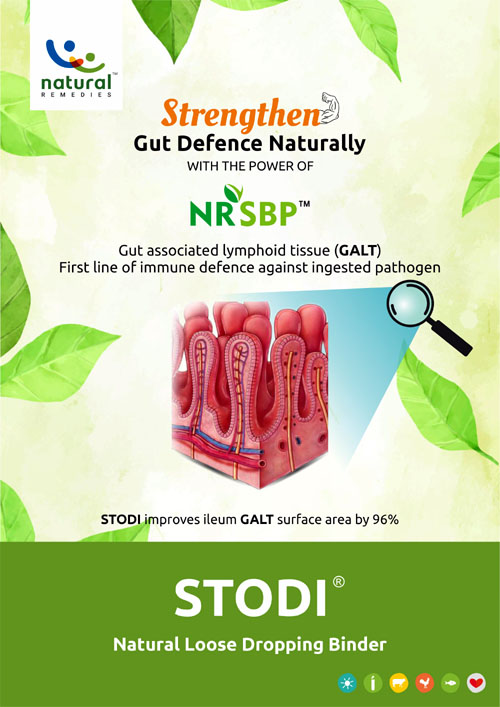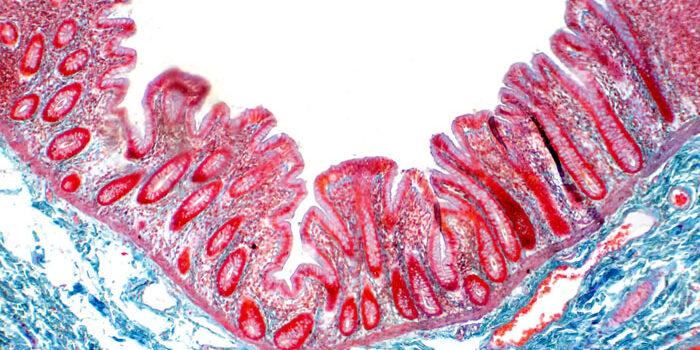The poultry industry is a significant sector of global agriculture, with the market growing significantly from $352.02 billion in 2022 to $378.84 billion in 2023, representing a compound annual growth rate (CAGR) of 7.6% (The Business Research Company, 2023).
 Unfortunately, poultry raised for commercial purposes are susceptible to a variety of environmental pathogen exposures (Sharma, 1999). There is nonetheless optimism because specific dietary treatments can have a significant impact on immunological function (Poultry World, 2019). The immune system in birds and other vertebrates is made up of two complementary parts, called the innate and adaptive systems, that cooperate to identify and defend against pathogens (Poultry World, 2019).
Unfortunately, poultry raised for commercial purposes are susceptible to a variety of environmental pathogen exposures (Sharma, 1999). There is nonetheless optimism because specific dietary treatments can have a significant impact on immunological function (Poultry World, 2019). The immune system in birds and other vertebrates is made up of two complementary parts, called the innate and adaptive systems, that cooperate to identify and defend against pathogens (Poultry World, 2019).
 Gut immunity
Gut immunity
The intestine is crucial for the absorption of nutrients, the tolerance of benign and helpful microorganisms, and the capacity to react appropriately to harmful microbes or microbial products while preventing their translocation to more sterile body compartments. The mucus layer(s), antimicrobial peptides, and IgA, which serves as the first line of defence, are a few elements that contribute to antimicrobial defences in the colon (Broom and Kogut, 2018).
In the intestine of monogastric animals like poultry, there is a complex system of submucosal and mucosal lymphatic tissue known as gut-associated lymphoid tissue (GALT). As it is exposed to the microflora from both feed and the environment, GALT has a crucial role in regulating the occurrence of poultry enteric illnesses through its immune capabilities (Talkad et al., 2019). The distinct GALT features include Meckel’s diverticulum, Peyer’s patches, lymphoid clusters inside the lamina propria, and cecal tonsils. GALT includes 75% of all lymphoid cells in the body, and of these, the gut produces 50% of lymphocytes and about 80% of all immunoglobulins (Ig). The distinguishing characteristic of the GALT system is the synthesis of IgA antibodies produced on the mucosal surface (Talkad et al., 2019).
STODI in gut immunity
 To improve poultry’s immune system, there is a need to enhance gut immunity. STODI, a polyherbal formulation with major bioactive compounds include andrographolides, catechins, ellagitannins, punicalagin, and other polyphenols are responsible for better immunity by increasing the surface area of the gut-associated lymphoid tissue.
To improve poultry’s immune system, there is a need to enhance gut immunity. STODI, a polyherbal formulation with major bioactive compounds include andrographolides, catechins, ellagitannins, punicalagin, and other polyphenols are responsible for better immunity by increasing the surface area of the gut-associated lymphoid tissue.
In a study by Talkad et al. (2019) on broiler chicks (Ross 308), when supplemented with STODI (750 g/ton), it significantly increased the GALT area (μm2) of the lamina propria of the ileum and Meckel’s diverticulum. Study has shown 96% increase surface area of GALT over negative control in ileum and 86% increase surface area of GALT over negative control in Meckel’s diverticulum. The surface area of the GALT plays a crucial role in its ability to mount an effective immune response. The larger the surface area, the more immune cells and antibodies can be produced, leading to better protection against infections.
Conclusion
In conclusion, the poultry industry is a significant sector of world agriculture, and the gut immunity of commercial birds can be enhanced through certain nutritional interventions, including the use of polyherbal formulations such as STODI. By increasing the surface area of the gut-associated lymphoid tissue, STODI can improve the immune system of poultry and help control the incidence of enteric disorders.
References • Sharma, J.M., 1999. Introduction to poultry vaccines and immunity. Advances in veterinary medicine, 41, pp.481-494. • https://www.thebusinessresearchcompany.com/report/poultry-global-market-report • https://www.poultryworld.net/health-nutrition/avian-immunity-101-the-basics/ • Broom, L.J. and Kogut, M.H., 2018. Gut immunity: its development and reasons and opportunities for modulation in monogastric production animals. Animal health research reviews, 19(1), pp.46-52 • Talkad, M.S., D’souza, P. and Marimuthu, S., 2019. Small intestinal gut-associated lymphoid tissue histomorphometry analysis in broilers supplemented with Stodi®. Journal of Medicinal Plants, 7(5), pp.141-145
Article by same organisation: Standardized Botanical Powders : What? Why? How?






